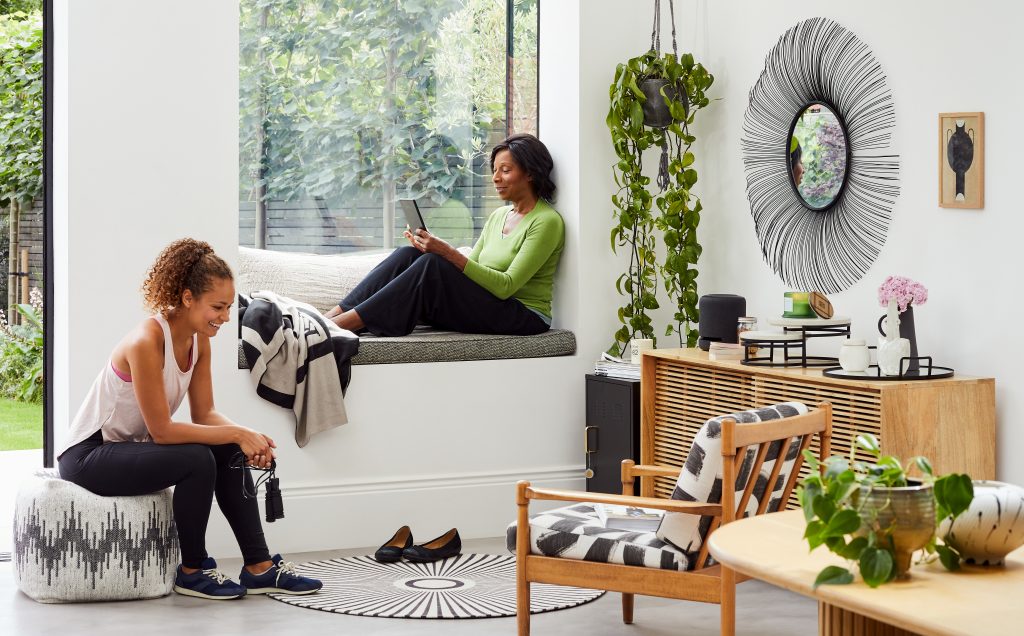Now more than ever, we’ve come to know the value of living in a home that can adapt to suit our needs. Creating versatile living areas that transition from work to play and morning to night will help you make the most of your space so you can enjoy spending time in it, whatever you have to work with. And, as the cooler weather draws in and the last of the summer days are upon us, there’s never been a better time to start.
Whether you’ve already managed to curate a home that’s flexible to your day-to-day life or you’re wondering where to begin, our Joyful Living experts, Gill Gauntlett, Anouska Lancaster and Amy Burrows, are here to help with their tips and tricks.
Creating a multi-functional space
Whether your family drops by at the drop of a hat or you’re busy working at home all day, you probably find that your home has to work harder and harder to accommodate your lifestyle, and that includes using rooms in different ways. But, to ensure that your home doesn’t end up with a bit of an identity crisis, Anouska Lancaster recommends this smart but simple solution. ‘I like to create zones in rooms using furniture,’ She says, ‘For example, an L-shaped sofa can break up a room to create two in one, and bookshelves are another great way of dividing up space.’ However, if you’re struggling for space, you don’t have to use bulky furniture to do the job. ‘If there’s a space between the back of the sofa and the kitchen, pop down a rug to create a soft play area for little ones, or a yoga mat for exercise. You can even define an area with storage boxes for toys or exercise equipment!’
As well as dedicating spaces to different activities, it’s equally important to create a place to relax in, especially if you don’t have a whole room you can retreat to when it’s time to switch off. Amy Burrows recommends finding even the smallest of corners to create your relaxation station.
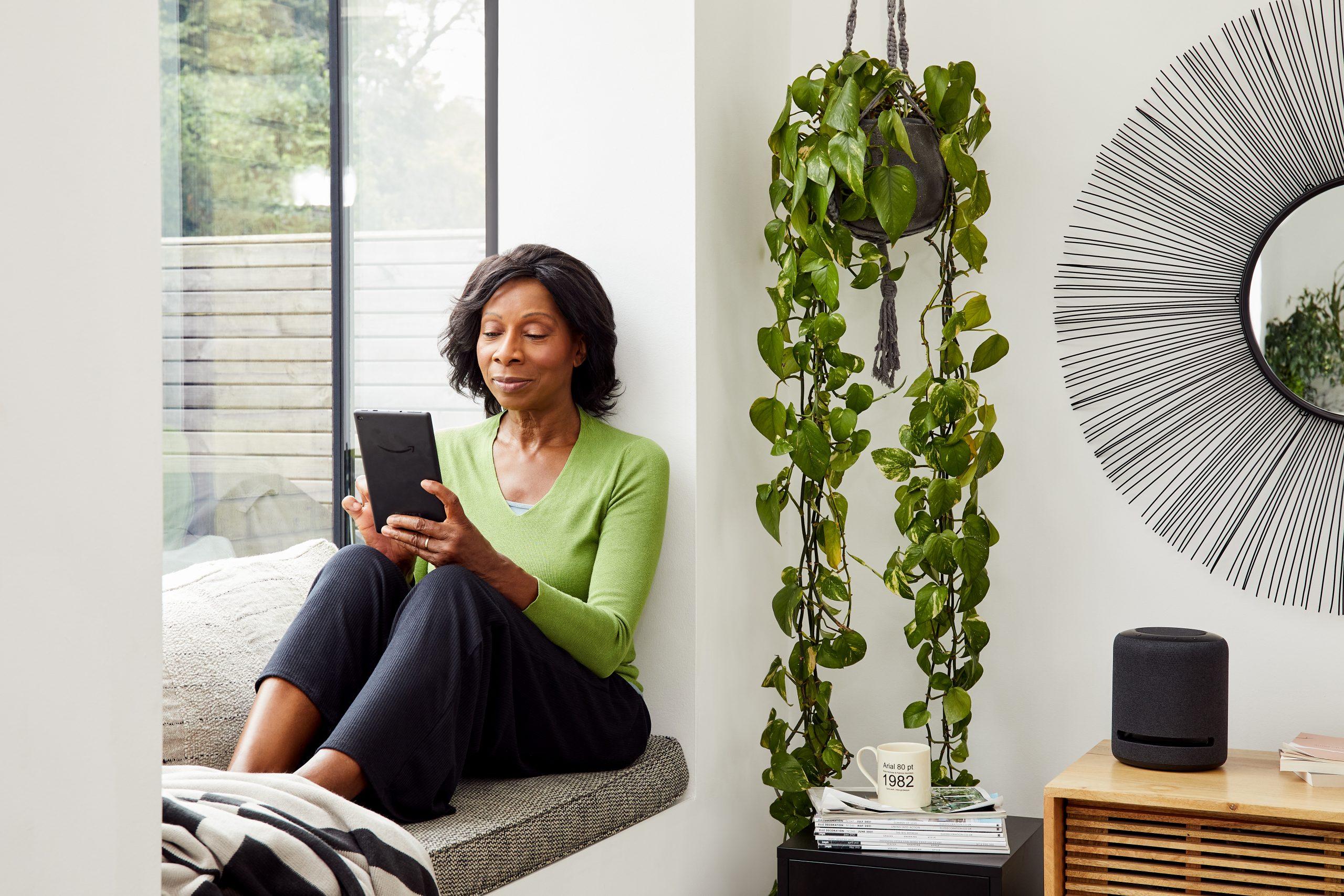
‘Snugs have become more and more popular, and there’s something really inviting about creating a small, quiet place that anyone can escape to for some thinking time. It may be adding cushions to a bay window to create a window seat or even transforming your landing by adding a cosy chair and a side table – it’s just about making an inviting space for someone to sit with a book or daydream with a cup of tea.’
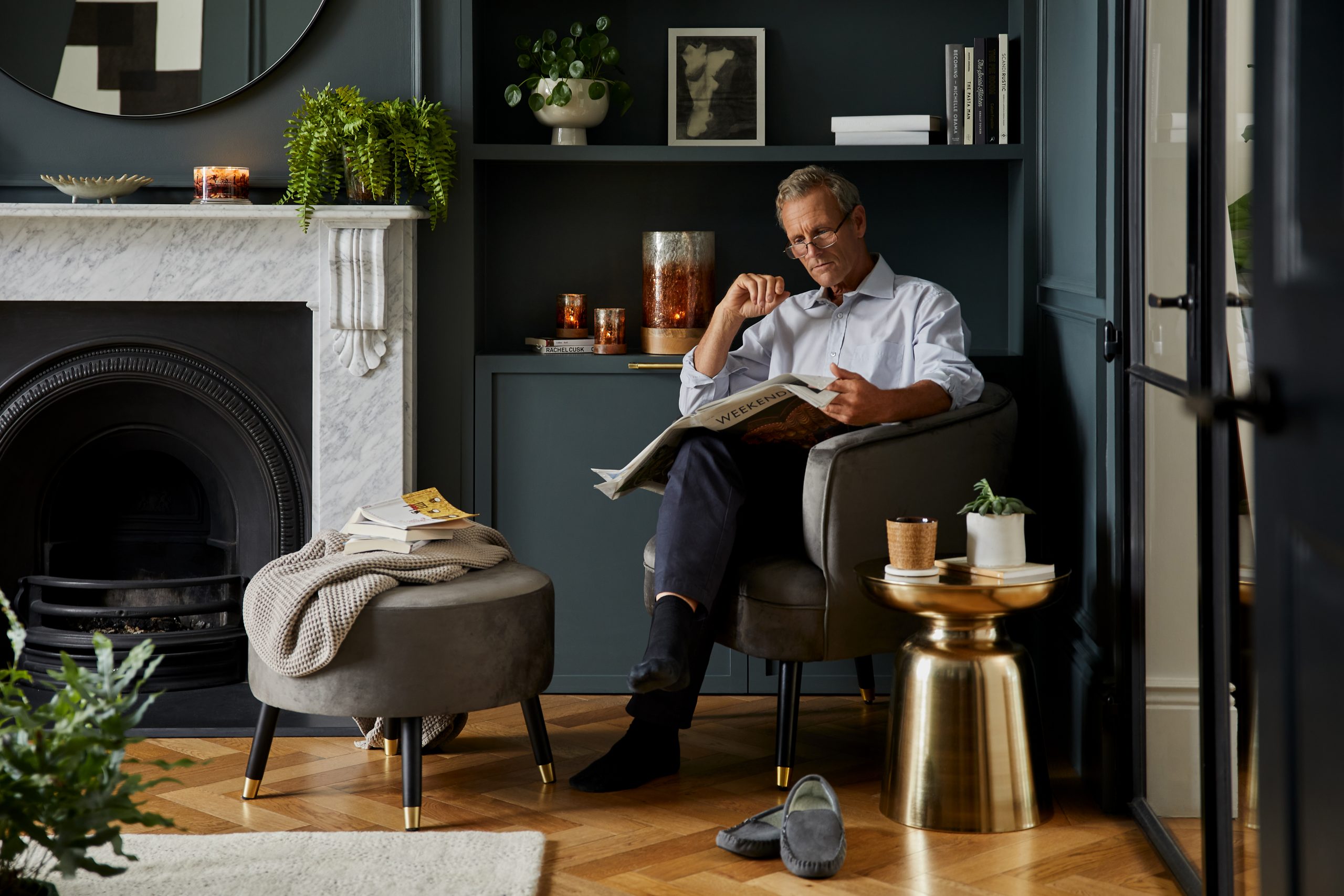
Amy also suggests using soft furnishings to utilise your room in different ways when you just can’t section off certain areas of your home on a permanent basis. ‘Floor cushions work hard,’ She says, ‘They’re brilliant as a pouffe to put your feet on in the evening, great as extra seating when friends are over, easy to take into the garden to create an outside room feel and evidently the perfect spot for the dog to sleep on too!’
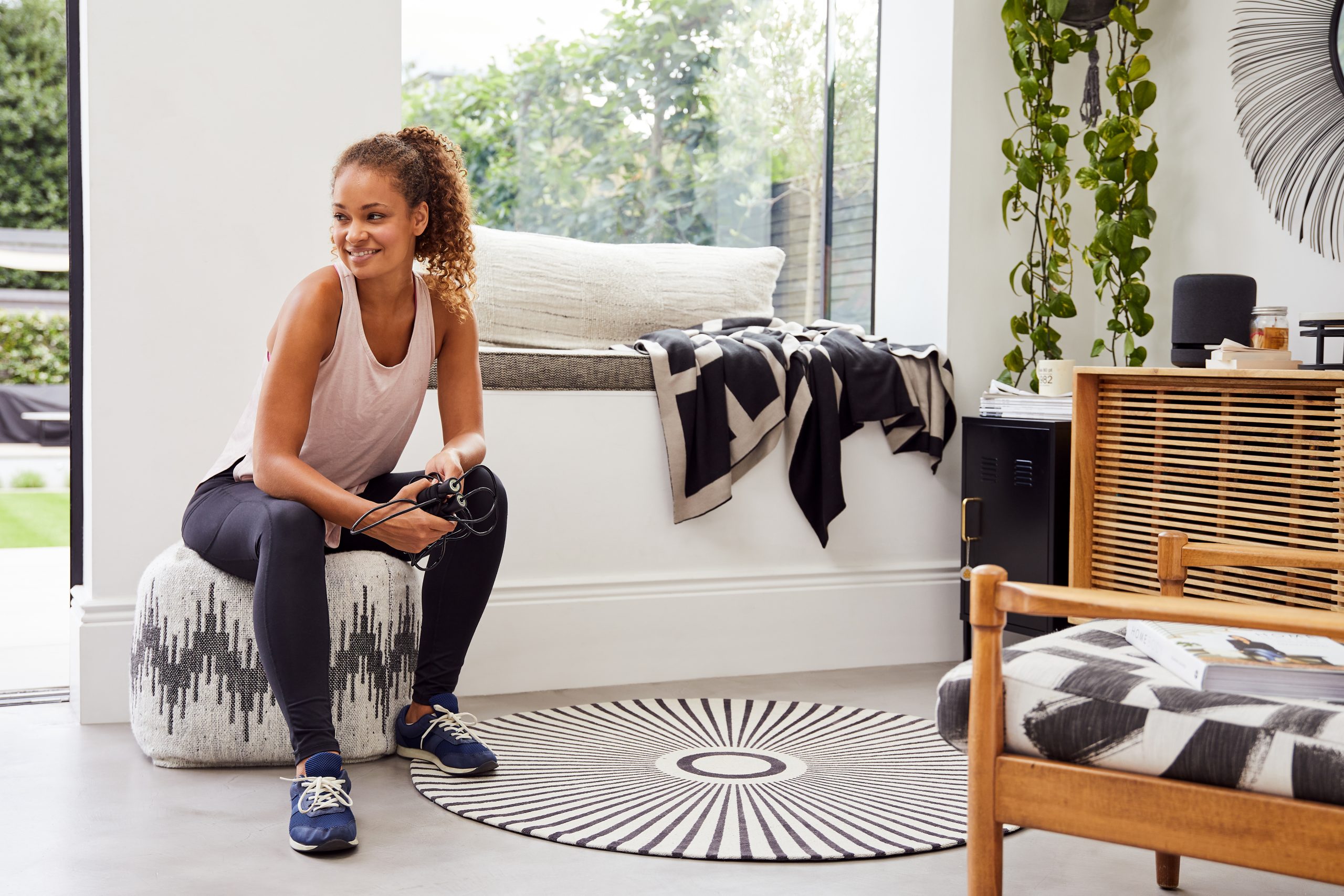
From day to downtime
Transitioning from a busy workday to a relaxing evening can be a real challenge at home, but there are ways to make the daily change a little bit easier. For our experts, using lighting to create a soothing ambience is a quick and effortless solution. ‘Lighting is so important – gone are the days when you just have a main centre light that’s so bright its frightening!’ Gill laughs, ‘We have dimmer switches in all our rooms, and I also love lamps.’ These provide a softer, calmer light source to get a cosy feel going on in the room, and Anouska firmly agrees.
‘Lighting, for me, is the quickest and easiest way to recreate a space in the home. The lights are always on full during the day, when the room is in use for work. At night, I’ll turn off all the main ceiling lights and use table lamps and candles to change the look and ambience of the room – it becomes a completely different space by night, with soft lighting and a little music.’
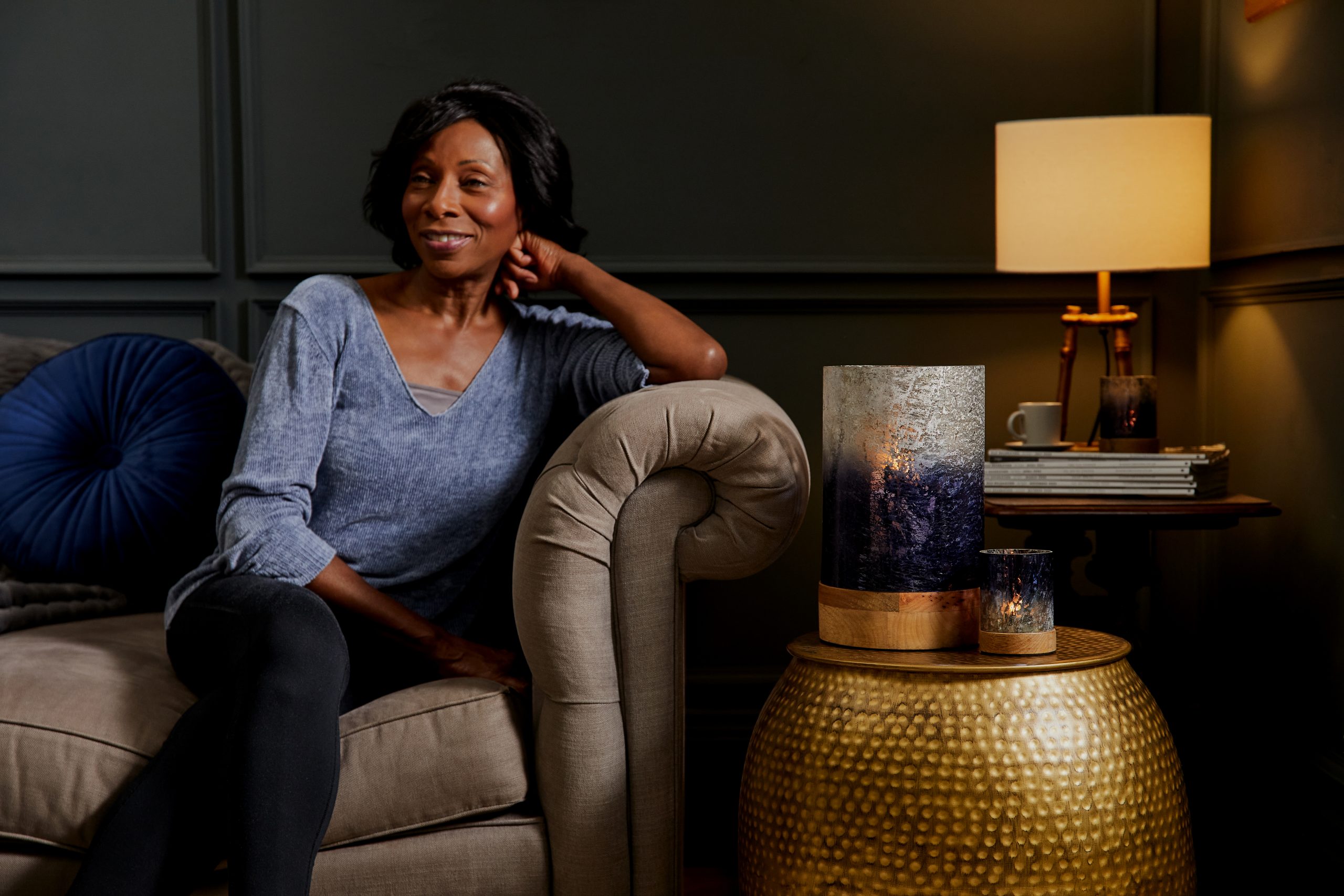
Amy agrees that dimmer and smart lighting can make all the difference when it comes to marking the difference between daytime and downtime. ‘Having the versatility to change the brightness and even the colour of lighting in a living space really helps to set the mood,’ She says, and has her favourites when it comes to changing up the ambience with light: ‘Go for warmer, more orange light as the evening starts to draw in, and darker, moodier light for an evening feel.’
Building this simple lighting routine in your home can help your mind switch off for a while, transforming what was once a busy hub into a place of peace. ‘It’s about training yourself to unwind after a long day,’ Anouska says.
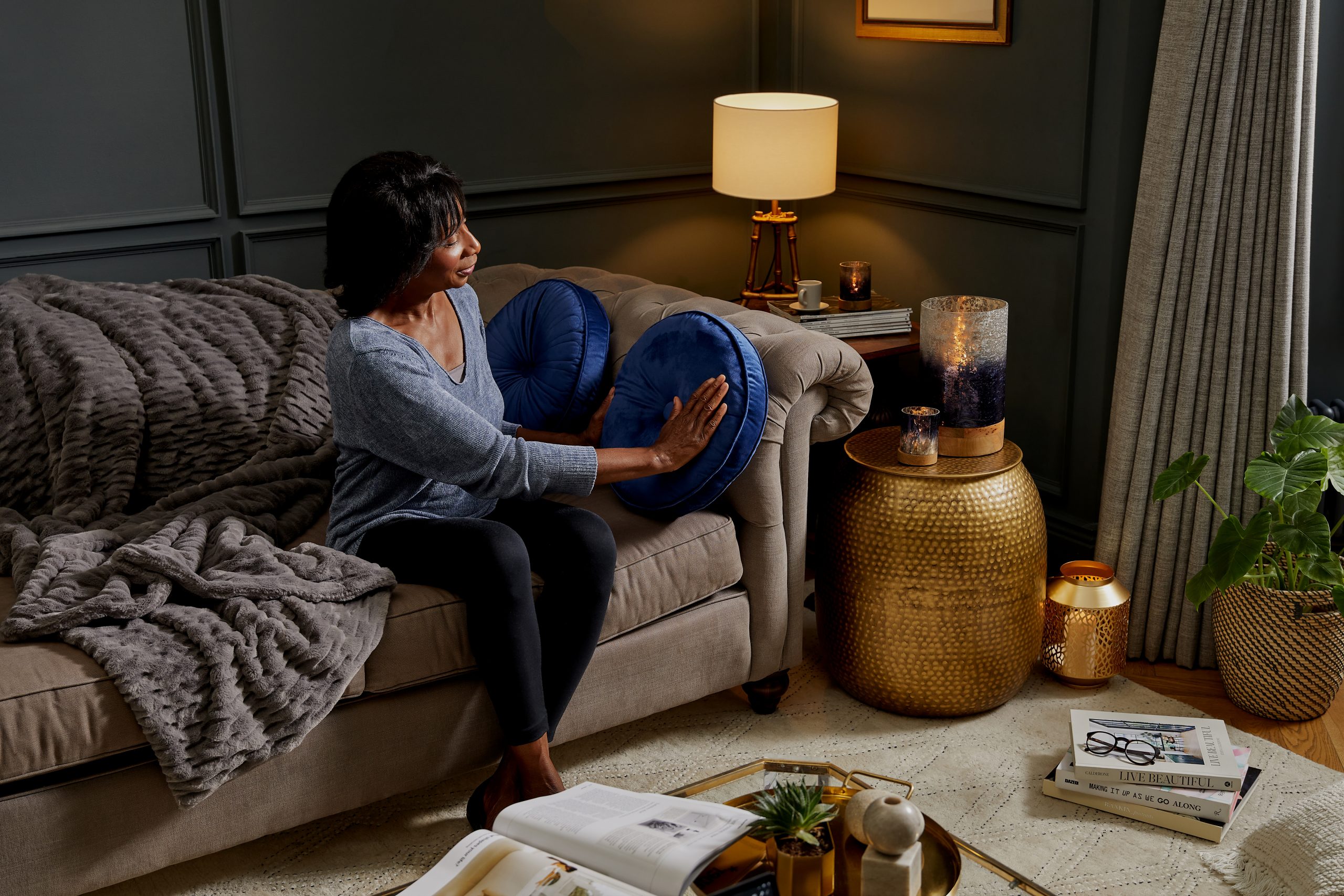
And the cosiness doesn’t have to stop with the lights. A really simple way to switch up your space is to introduce some soft furnishings that you won’t be able to resist sinking into. ‘I am mad on cushions and always looking for something new,’ Gill says, ‘And I also have a lovely heart basket full of throws, for those colder evenings.’
Anouska firmly agrees. ‘Layer furniture with throws and cushions to add warmth and texture to your space. They’re a great way to soften the look of a room instantly, and to create a cosy atmosphere for snuggling up and enjoying your favourite box set!’
From cluttered to clear
However you choose to use the rooms in your home, nothing is more important that having enough storage on hand to pack things away when you need to.
‘Storage is key when it comes to a flexible living space,’ Anouska says, ‘‘Out of sight, out of mind’ is a phrase that springs to mind! We have a wonderful Kelly Hoppen ottoman that we store our laptops and paperwork in at the end of a long day, then we pop a tray on top and use the ottoman as a footrest, and a table for my well-earned glass of wine!’
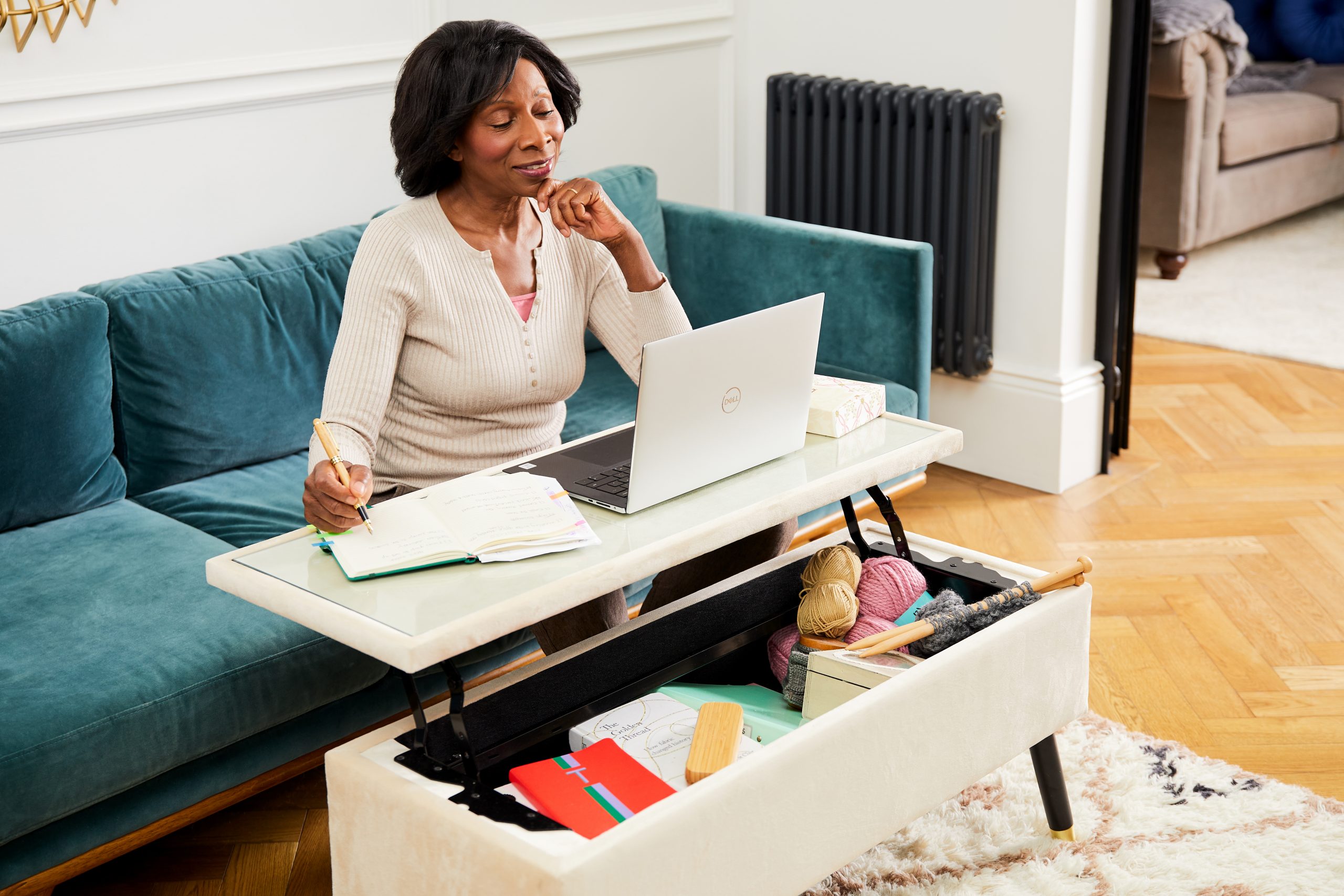
Gill also stresses the importance of storage to transform your space in a flash. And to do it? She also loves an ottoman for its versatility. ‘Ottomans are such a great invention. They not only dress a room up and also act as a chair, but they are so handy for storing all your bedding and cushions in to keep the floor clutter free.’
And when it comes to furniture that doubles up as storage, Gill has another tip too. ‘My bedside tables are silver metal trunks that I have had for almost 20 years; I store photos and things in them that I am not using all the time.’
Amy also favours attractive, versatile storage that can be used in multiple ways, and agrees that trunks are an essential any organised home. ‘Storage trunks, like the iconic Bundleberry pieces, are fantastic for disguising the odds and ends you don’t want out on display. They add such a stylish, vintage twist to a space – you can dress the top with plants, flowers, trays or even coffee table books and no one needs to know if they’re filled with junk inside!’
Finding clever little solutions to store your essentials is the perfect way to transform your space in an instant, as you can whip things out and tuck them away as needed, whether you’re bringing out toys for the kids or folding away winter jumpers. However, Amy maintains that as well as adding storage to your home, making the most of the floor space you already have is just as important – and you may not be using it to its full advantage!
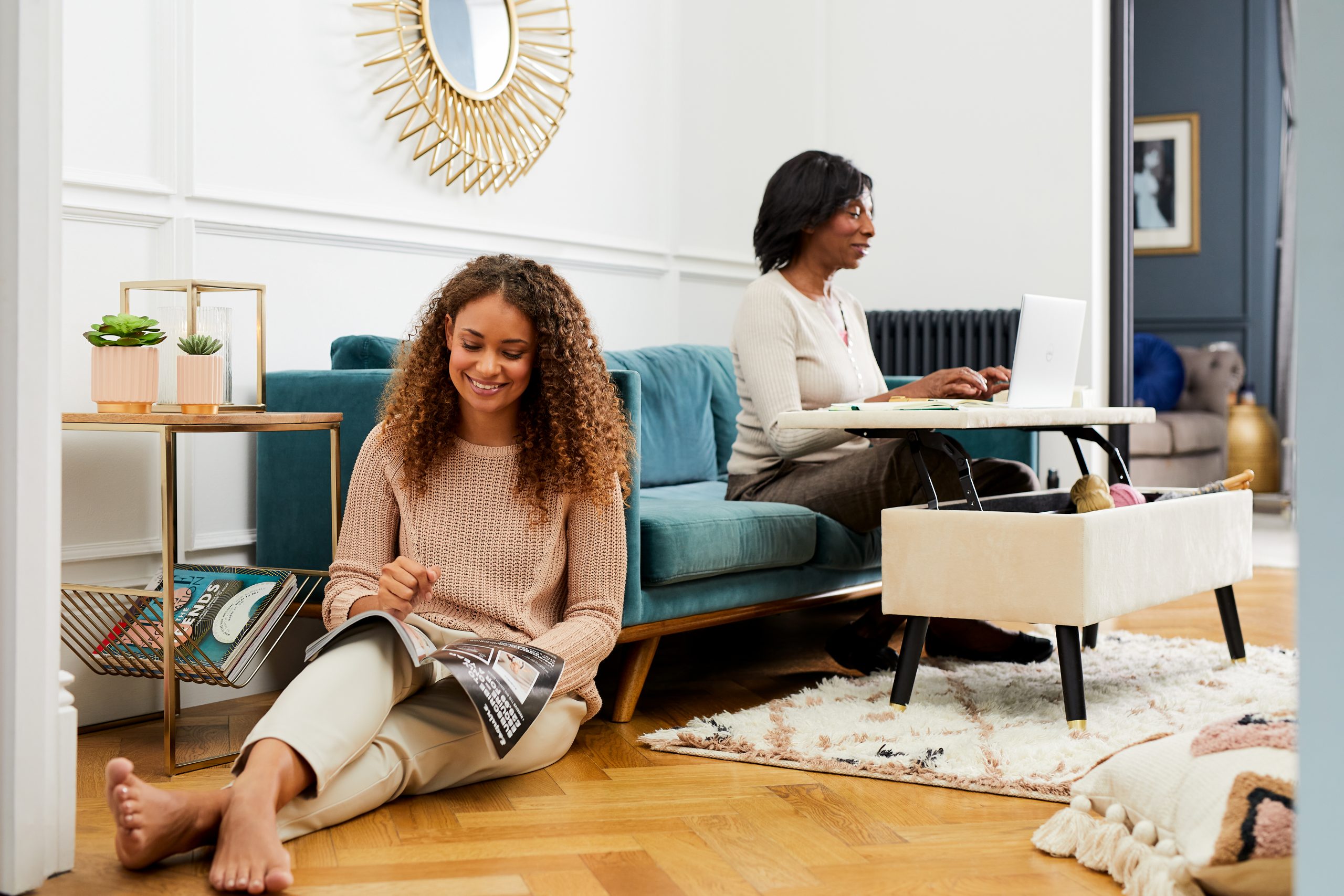
‘Bench seating feels like a quick win because if you can lift the lid and hide clutter underneath it, you’re immediately maximising the most of that floor space,’ She suggests, and encourages us to check out other areas of floor space that we may be neglecting: ‘Under the bed is another one – it’s the biggest piece of furniture in your bedroom and yet so many people don’t utilise the square footage underneath it. Gas lift beds are brilliant, beds with built in drawers or even reaching for soft storage, which can be squeezed under a bed frame, all buys you an additional space for clutter.’
As seasons change
As summer comes to a close, signifying a seasonal change in your home can re-set your state of mind and help you feel refreshed, and when it comes to small changes that don’t require a whole home makeover, the experts favour hints of elegant autumnal hues.
‘My mum has always been really good at marking every occasion in the calendar, so I’ve always aspired to do the same, by adding small but relevant touches that nod to seasonal events,’ Amy says, and offers her suggestions for bringing out the best of the season in your home. ‘As we move out of summer, it might be adding an autumnal wreath to the front door, changing the flowers on the table to inject some burnt orange and copper tones, or adding a glass bowl of pine cones with little twinkly fairy lights – it’s an opportunity to get creative and it’s amazing what you can do, without spending much at all.’
Anouska also celebrates the season by adding autumnal colours and textures to her home, but if you’re not sure where to start, she recommends this easy method for dressing your space. ‘Treat your home as you’d treat your wardrobe. Start to add layers and cosy fabrics such as faux fur and wools to your interior to add warmth and texture. Rich oranges and deep blues will make a room feel cosier instantly, and why not add a feature wall in a darker colour to create a cosy zone, particularly if you have an open plan area in your home? Rugs are also a great way to anchor an area and create a cosy zone for snuggling up in.’
And, when it comes to cosiness, Gill maintains that there’s no better place to start than the bed, swapping out those lightweight sheets for comforting textures that invite you to sink into them. ‘In autumn and winter, I use grey faux fur throws and pillows, and same goes for my sofa!’
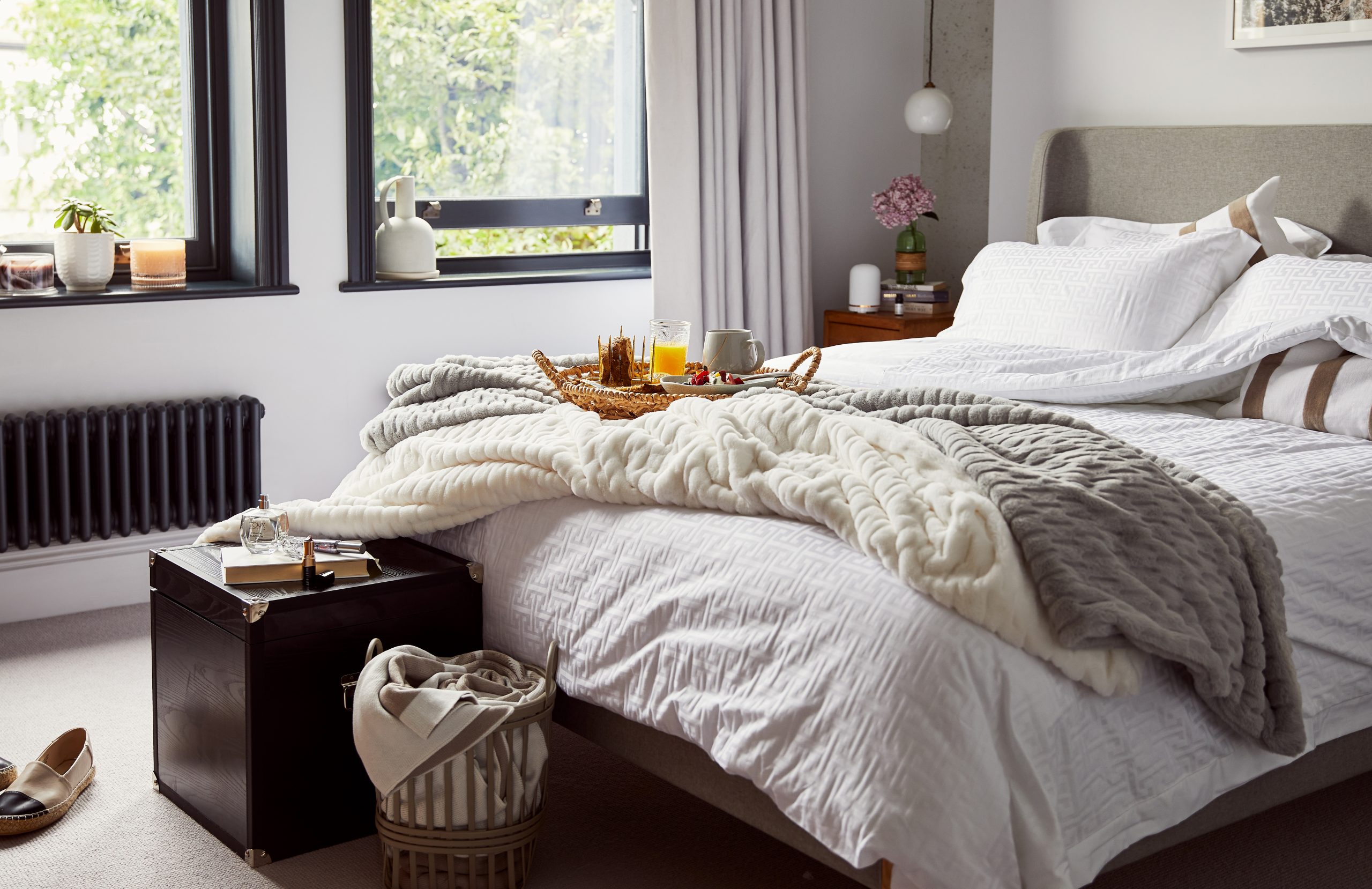
However, classic fabrics like faux fur don’t have to mean boring – Gill recommends adding your own personal touches into the mix to bring some character into your decor. ‘I have a union jack cushion in grey and beige tones (it’s so old but I love it!), and for the sofa, I have a beautiful red throw with a big cream heart on it.’
It’s all about incorporating little details that signify autumn to you, which can easily be switched out when spring comes round again. It goes to show that a flexible home doesn’t only have to mean functional – it can be fun, too!
If you’re feeling inspired to create your own flexible living space at home, why not check out our special edit to help you transition into the new season?

